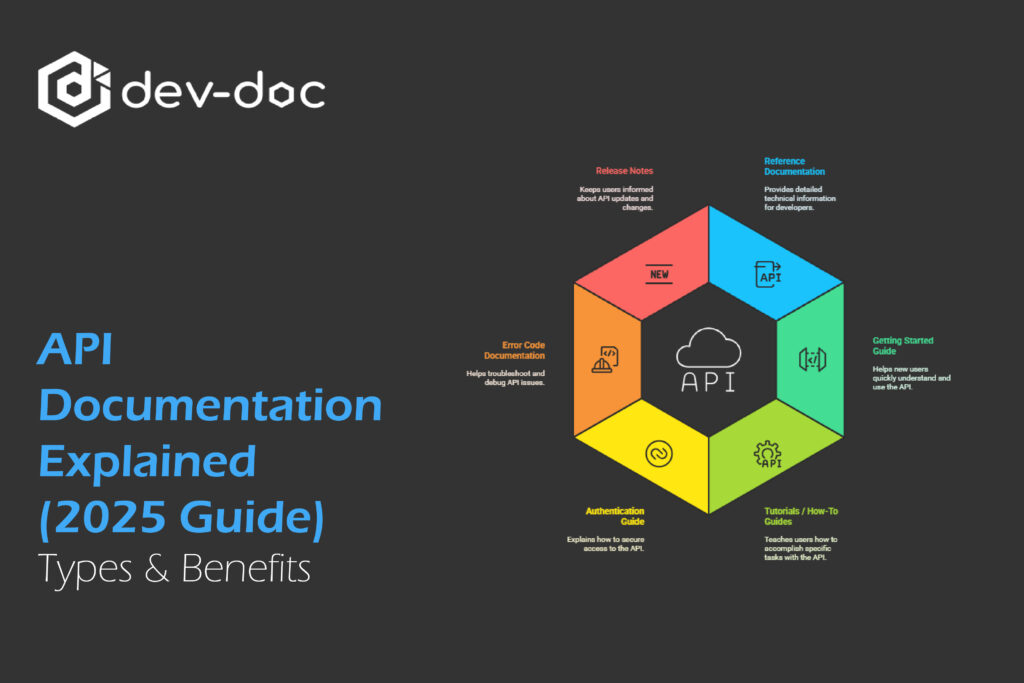In this blog post, we’ll dive into API documentation, explaining what it is, why it matters, and the different types every developer should know.
What is the API documentation?
API documentation is a structured manual to interact with the API, explaining how the API works, what it can do, and how to use it efficiently. It typically includes information like endpoints, methods, parameters, authentication, request/response examples, error codes, and more.
A clear, consistent, and easy-to-navigate API documentation is essential not just for the external users, but also for your internal teams building and maintaining integrations. Even the most powerful API might feel like a black box.
Why is API documentation important?
API documentation is an essential component for successful software development and integration. Let’s see why its importance can’t be overstated,
Improves Developer Experience
Clear and well-organized API documentation allows developers to understand and use the API quickly and efficiently. When developers can easily navigate your documentation and find clear explanations of endpoints, parameters, and data models, they are more likely to adopt the API and use it effectively. It also encourages more developers to integrate with your API. Quality documentation can accelerate the overall development cycle and minimize errors by eliminating guesswork and reducing friction.
Accelerates Onboarding
API Documentation helps you fasten the onboarding process by providing quick start guides like getting started guides, tutorials, and examples. Resources such as Getting Started guides, tutorials, and quick-start examples help developers understand the API’s purpose, authentication mechanisms, and key endpoints quickly. This cuts on support requests and back-and-forth emails which makes your team focus on production valuable in agile development environments.
Reduces Support Burden
Well-organized documentation acts as a self-server support that developers can use to troubleshoot errors, understand status codes, and figure things out on their own. This means your team receives fewer tickets, allowing your team to provide more time for API improvement.
Ensures Consistency Across Teams
API document is also a crucial element for internal APIs, maintaining alignment among teams involved in the project. Whether it’s frontend, backend, QA, or DevOps, well-organized documentation ensures that all the teams stay on the same page, preventing miscommunication and integration errors. Standardized API docs become a single source of truth that improves development velocity, and simplifies maintenance for complex systems.
Makes Debugging Easier
API documentation allows you to fix bugs and issues quickly and efficiently. Having clear documentation of inputs, outputs, and error codes helps your team to provide quick responses to bugs and error fixing. Contextual documentation such as usage examples, rate limits, and request/response schemas enhances the clarity of logs and API responses. This accelerates the debugging process and helps teams maintain system stability and performance with minimal disruption.
What are the most common types of API documentation?
API documentation comes in various forms, but the following types are among the most widely used.
Reference Documentation
Reference documentation acts as a technical backbone of an API system, providing detailed information about endpoints, functions, parameters, and responses of an API. The primary audience for this kind of documentation is the developers who need precise, comprehensive information to successfully integrate and interact with the API. This documentation briefly describes the structure and behavior, including insights on HTTP methods, URLs, endpoints, request/response examples, status codes, authentication methods, etc. A well-structured reference guide often supports auto-generation and version control, ensuring accuracy and up-to-date information across deployments.
Getting Started Guide
This Getting Started Guide focuses on new users, helping them to understand how to begin using the API quickly with minimal friction. It typically introduces the purpose and core functionality of the API in a clear, concise, and easy-to-follow manner, containing basic information about the API such as an introduction to API, Sample requests, How to get an API key, Basic authentication, and Quick integration steps. You must prioritize simplicity and clarity when writing a Getting Started documentation. Providing sample code and a quick walkthrough can help build confidence in early adopters.
Tutorials / How-To Guides
These tutorials and how-to guides teach users how to accomplish specific tasks using the API. This can be step-by-step instructions, use-case-driven examples, and code samples in multiple languages. The primary audience for this documentation is intermediate developers or those exploring specific use cases. For example, processing checkout, handling notifications, or syncing data. Tutorials and How-To guides encourage best practices in system usage.
Authentication Guide
Authentication documentation plays a critical role in securing system access and preventing unauthorized usage. It briefly explains to users how to authenticate and authorize access to the API, including information like API key usage, OAuth 2.0 flows, JWT handling, token expiration, refresh, etc. Developers and security-focused teams are the primary audience of the documentation. You may also touch on advanced topics like multi-factor authentication and IP whitelisting in Authentication documentation.
Error Code Documentation
Error code documentation is crucial for troubleshooting and debugging during the development and integration process. This documentation aims to help users understand and troubleshoot issues and primarily focuses on developers debugging integrations. The Error-code documentation clearly explains error responses returned by the API, typically including HTTP status codes (e.g., 400, 401, 403, 500), error messages, and diagnostic guidance. If you have an increasing number of support overhead, you must utilize Error code documentation, providing a more efficient integration experience.
Release Notes
Release notes serve as an update history for an API, keeping users informed about updates, deprecations, and fixes. This documentation includes details about new features, bug fixes, breaking changes, and deprecated endpoints. Consistent and transparent release notes are critical when your team manages live integrations, ensuring the updates are compatible with evolving APIs.
Closing Notes
API documentation is more than just a guide, it’s an unavoidable component for great developer experience. Whether you’re onboarding new users, supporting teams, or making the integration process easier, well-organized API documentation enables your team to build faster, troubleshoot smarter, and unlock the full potential of your API.
Documentation tools like Dev-doc, Doxygen, and Document360 elevate the overall documentation process, making it easier to create, maintain, and update documentation that stays in sync with your project progress.
If you still have any questions or require any additional support. Feel free to contact us any time.

